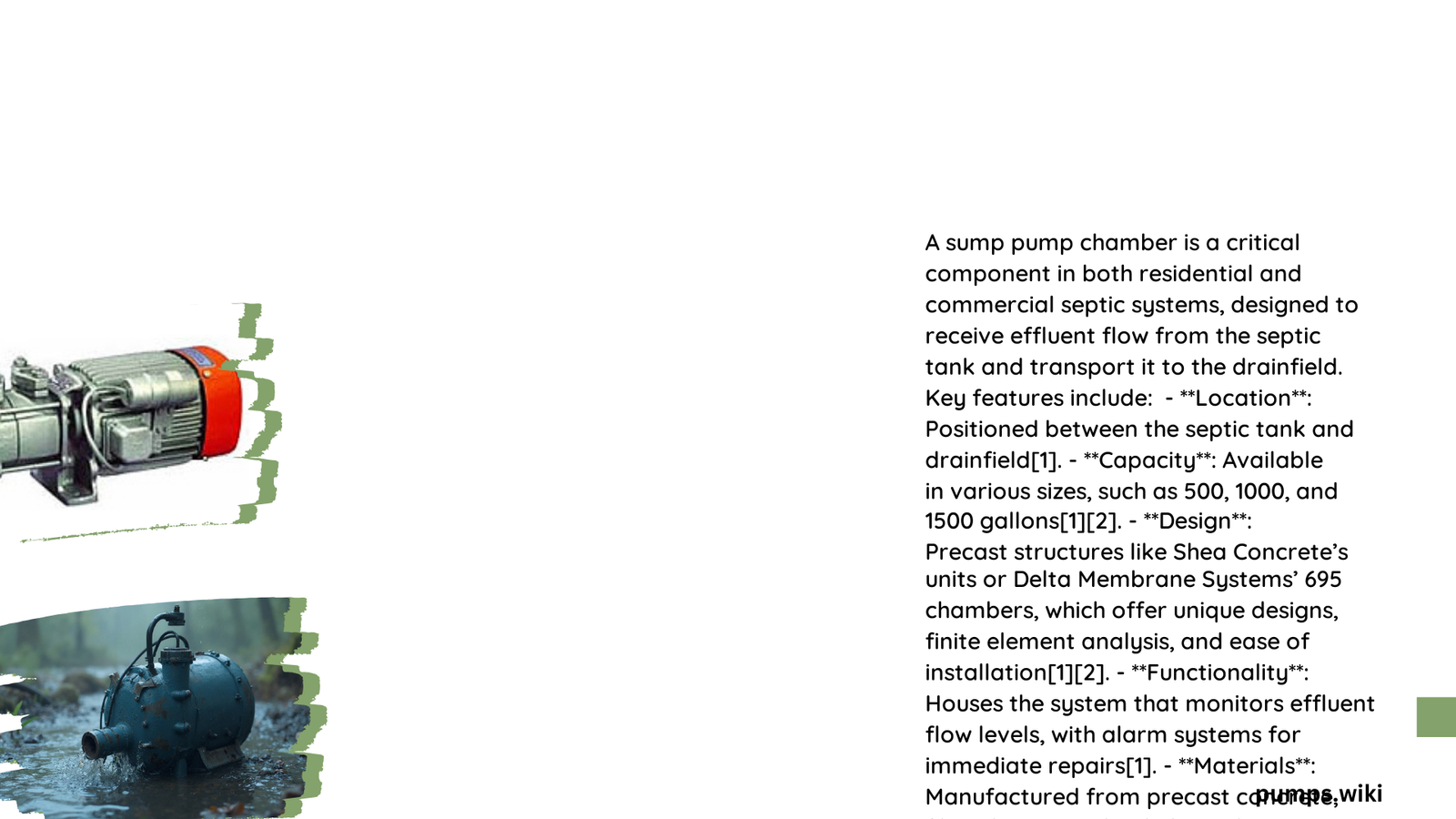Sump pump and chamber systems represent critical infrastructure for managing groundwater and preventing basement flooding. These integrated solutions protect residential and commercial properties by efficiently collecting and redirecting excess water away from foundational structures, utilizing specialized pumping mechanisms and strategically designed underground chambers that capture and remove potential water accumulation.
What Are the Essential Dimensions for a Sump Pump Chamber?
Sump pump chambers require precise dimensional considerations to ensure optimal performance and reliability. Residential installations typically demand specific spatial parameters:
Recommended Chamber Dimensions
| Parameter | Specification |
|---|---|
| Minimum Width | 600 mm (24 inches) |
| Recommended Depth | 750-900 mm (30-36 inches) |
| Typical Diameter | 450-600 mm (18-24 inches) |
Critical Design Factors
- Spatial Accommodation: Ensure sufficient room for pump installation and maintenance
- Water Volume Capacity: Match chamber size with expected water inflow rates
- Structural Integrity: Select materials resistant to corrosion and environmental degradation
How Do You Select the Right Materials for Sump Pump Chambers?

Material selection plays a pivotal role in chamber durability and long-term performance. Recommended materials include:
- High-Density Polyethylene (HDPE)
- Exceptional corrosion resistance
- Lightweight and easy to install
-
Superior chemical stability
-
Fiberglass Reinforced Plastic (FRP)
- High strength-to-weight ratio
- Excellent water resistance
-
Minimal maintenance requirements
-
Stainless Steel
- Robust structural integrity
- Long-lasting performance
- Ideal for high-moisture environments
What Are the Key Steps for Professional Sump Pump Chamber Installation?
Preparation Phase
- Conduct thorough site assessment
- Identify optimal basement location
- Verify soil conditions and drainage patterns
Installation Procedure
- Excavate designated area
- Level chamber foundation
- Install pump and connect discharge pipes
- Implement waterproofing seals
- Connect electrical components
- Test system functionality
How Can You Maintain Your Sump Pump and Chamber Effectively?
Maintenance Checklist
- Monthly Inspections
- Check pump functionality
- Verify electrical connections
-
Inspect discharge pipes
-
Quarterly Tasks
- Clean chamber interior
- Remove sediment accumulation
-
Test backup battery systems
-
Annual Professional Assessment
- Comprehensive system evaluation
- Performance diagnostics
- Component replacement recommendations
What Calculations Determine Sump Pump Capacity?
The fundamental calculation for determining sump pump capacity involves:
[
V = Q \times T
]
Where:
– V = Required Sump Volume
– Q = Pump Capacity
– T = Cycle Time
Example Calculation
- Water Inflow Rate: 10 liters/minute
- Cycle Time: 5 minutes
- Calculated Volume: 50 liters
What Are Common Challenges in Sump Pump Systems?
- Inadequate water removal
- Electrical connection failures
- Pump motor degradation
- Insufficient chamber capacity
- Poor installation techniques
Recommended Pump Selection Criteria
- Flow Rate: Minimum 2500 gallons per hour
- Head Pressure: 10-25 feet
- Power Consumption: 115V, 5-10 amps
- Motor Protection: Thermal overload
Cost Considerations
| Component | Estimated Cost Range |
|---|---|
| Submersible Pump | £200 – £1,000 |
| Professional Installation | £300 – £800 |
| Annual Maintenance | £100 – £250 |
Final Technical Recommendations
- Prioritize professional installation
- Invest in high-quality components
- Implement regular maintenance protocols
- Consider backup power systems
